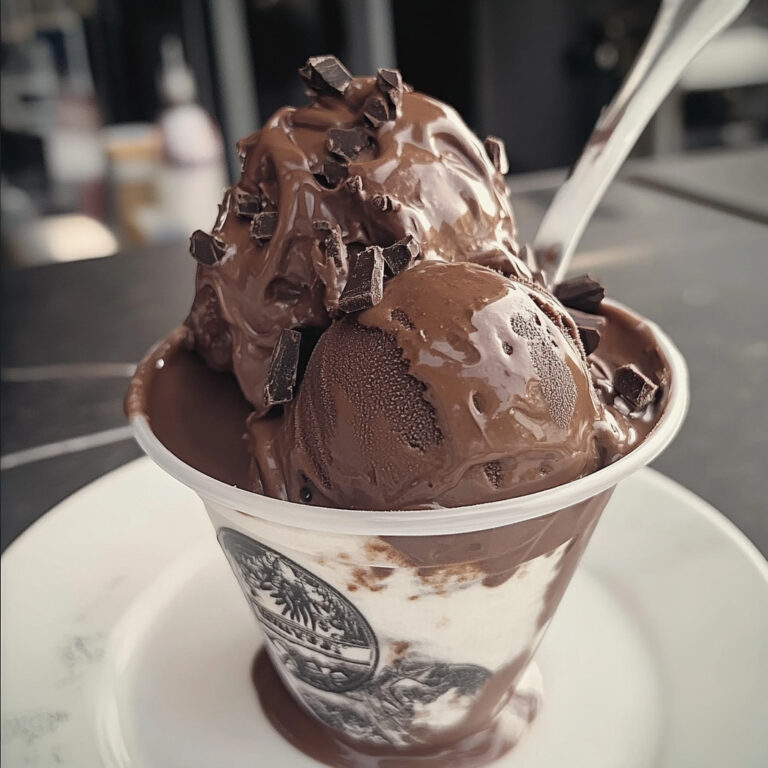Smoked Salmon Recipe: A Comprehensive Guide
Smoked salmon is a delicacy with a history as rich as its flavor. From its origins in the preservation practices of ancient cultures to its place in modern cuisine as a gourmet ingredient, smoked salmon is a versatile and flavorful addition to any meal. Whether you’re new to smoking fish or looking to refine your technique, this guide will take you through every step of the process, from selecting the best salmon to achieving the perfect smoky flavor.
The History and Cultural Significance of Smoked Salmon
Smoked salmon has been enjoyed for centuries across various cultures. The practice of smoking fish originated as a means of preservation. In colder climates, where fresh food was not always available year-round, smoking allowed people to extend the shelf life of their catch. Indigenous peoples of North America, Scandinavia, and Northern Europe were some of the earliest practitioners of fish smoking, developing techniques that have been passed down through generations.
Today, smoked salmon is not just a method of preservation but a culinary tradition that carries a sense of luxury and indulgence. It is often associated with special occasions, such as Christmas and New Year celebrations, and is a staple in many gourmet dishes worldwide. The distinctive taste of smoked salmon, with its delicate balance of saltiness, sweetness, and smokiness, makes it a sought-after ingredient for everything from breakfast to dinner.
Choosing the Right Salmon
The first step in making smoked salmon is selecting the right fish. The type of salmon you choose will significantly impact the flavor and texture of the final product.
- Wild-Caught vs. Farmed Salmon: Wild-caught salmon is often preferred for smoking because of its firmer texture and richer flavor. Wild salmon, such as Sockeye, King, and Coho, is known for its vibrant color and leaner flesh, which results in a denser and more flavorful smoked product. Farmed salmon, on the other hand, tends to be fattier and less intensely flavored. However, it is more widely available and often more affordable. When choosing farmed salmon, look for sustainably farmed options to ensure quality and environmental responsibility.
- Freshness Matters: Whether you choose wild-caught or farmed salmon, freshness is key. Fresh salmon should have a mild scent, firm flesh, and a bright, glossy appearance. The eyes of the fish (if buying whole) should be clear, not cloudy. If possible, purchase your salmon from a reputable fishmonger who can provide information on when and where the fish was caught.
- Frozen Salmon: If fresh salmon is not available, high-quality frozen salmon can also be used. Ensure the salmon has been properly thawed before beginning the curing process. Thaw the salmon in the refrigerator overnight to maintain its texture and prevent bacterial growth.
Ingredients
To make smoked salmon, you will need the following ingredients:
- Salmon Fillet (2 lbs): The centerpiece of this dish, the salmon fillet should be boneless and skin-on. The skin helps hold the fish together during the smoking process and adds an extra layer of flavor.
- Kosher Salt (1 cup): Salt is essential for curing the salmon. It draws out moisture, firms the flesh, and enhances the fish’s natural flavors. Kosher salt is preferred because it is less dense than table salt, allowing for better control over the salting process.
- Brown Sugar (1/2 cup): The sugar in the cure balances the saltiness and adds a subtle sweetness that complements the smoky flavor. Brown sugar, with its molasses content, adds a deeper, richer flavor than white sugar.
- Black Pepper (2 tablespoons, coarsely ground): Black pepper provides a mild heat that enhances the overall flavor profile of the smoked salmon. Coarsely ground pepper is recommended to avoid overpowering the delicate fish.
- Fresh Dill (Optional, 2 tablespoons chopped): Dill is a traditional pairing with salmon, adding a fresh, herbaceous note that contrasts beautifully with the rich, smoky flavor.
- Lemon Zest (Optional, from 1 lemon): For a citrusy twist, add lemon zest to the curing mixture. It brightens the flavor of the salmon and pairs well with the smokiness.
- Smoking Wood Chips (1 cup): The type of wood you choose for smoking will affect the flavor of the salmon. Popular options include applewood, which provides a mild, sweet smoke; hickory, for a stronger, more robust flavor; and alder, which is traditional for smoking fish and imparts a light, delicate smokiness.
Preparing the Salmon: The Curing Process
Curing is a critical step in making smoked salmon. This process involves coating the fish in a mixture of salt and sugar to draw out moisture, concentrate flavors, and create a firm texture that holds up well during smoking.
- Mix the Cure: In a mixing bowl, combine the kosher salt, brown sugar, and black pepper. If you’re using dill and lemon zest, add them to the mixture. The cure should be evenly blended to ensure consistent flavor throughout the salmon.
- Apply the Cure: Place the salmon fillet skin-side down in a shallow dish or on a baking sheet. Evenly spread the curing mixture over the entire surface of the salmon, pressing it gently into the flesh. Ensure that the cure covers the fish entirely, as any exposed areas may not cure properly.
- Refrigerate: Cover the dish tightly with plastic wrap or place the salmon in a large resealable plastic bag, ensuring that the curing mixture stays in contact with the fish. Place the salmon in the refrigerator and let it cure for 12 to 24 hours. The curing time can be adjusted based on the thickness of the fillet and your personal taste preference. A longer cure will result in a firmer, saltier salmon.
- Rinse and Dry: After curing, remove the salmon from the refrigerator. Rinse it under cold running water to remove the excess curing mixture. This step is crucial to prevent the salmon from becoming too salty. Pat the salmon dry with paper towels. For best results, allow the salmon to air-dry in the refrigerator for another 2 hours, uncovered. This helps form a pellicle—a thin, sticky layer on the surface of the fish that allows the smoke to adhere better.
Smoking the Salmon
Once the salmon has been cured and dried, it’s time to smoke it. The smoking process imparts the characteristic flavor and aroma that makes smoked salmon so distinctive.
- Preheat the Smoker: Preheat your smoker to 180°F (82°C). If you don’t have a smoker, you can use a grill with indirect heat or a stovetop smoker. The key is to maintain a consistent low temperature to slowly cook the salmon while allowing it to absorb the smoke.
- Prepare the Wood Chips: Soak the wood chips in water for about 30 minutes before smoking. This prevents them from burning too quickly and ensures they produce a steady stream of smoke. Drain the chips before adding them to the smoker.
- Smoke the Salmon: Place the salmon on the smoker rack, skin-side down. Add the soaked wood chips to the smoker and close the lid. Smoke the salmon for 2 to 4 hours, depending on the thickness of the fillet and the desired level of smokiness. Check the internal temperature of the salmon periodically. It should reach 140°F (60°C) and flake easily with a fork when done. Be careful not to overcook the salmon, as this can result in a dry texture.
- Cool and Store: Once the salmon is smoked, remove it from the smoker and allow it to cool at room temperature. You can serve it immediately, or for a more developed flavor, refrigerate it for a few hours before serving. Smoked salmon can be stored in the refrigerator for up to a week. For longer storage, vacuum-seal the salmon and freeze it for up to three months. Thaw frozen smoked salmon in the refrigerator before serving to preserve its texture and flavor.
Serving Suggestions
Smoked salmon is incredibly versatile and can be served in numerous ways. Here are some ideas to inspire your culinary creativity:
- Classic Bagels and Lox: Serve slices of smoked salmon on a toasted bagel with cream cheese, capers, thinly sliced red onion, and fresh dill. This traditional combination is a brunch favorite and allows the smoky, rich flavor of the salmon to shine.
- Salads: Add smoked salmon to salads for a protein-rich, flavorful addition. It pairs particularly well with ingredients like avocado, cucumber, and arugula. Dress with a simple vinaigrette made from lemon juice, olive oil, and Dijon mustard to complement the salmon’s smokiness.
- Canapés: For an elegant appetizer, serve smoked salmon on small toasts or blinis with crème fraîche and a sprinkle of chives or dill. The contrast between the creamy, tangy crème fraîche and the rich, smoky salmon is a classic combination.
- Pasta Dishes: Incorporate smoked salmon into creamy pasta dishes for a luxurious meal. Smoked salmon works well with creamy sauces that include ingredients like lemon, capers, and fresh herbs. Try a smoked salmon Alfredo or a lemon-dill pasta for a sophisticated twist on comfort food.
- Charcuterie Boards: Smoked salmon is a fantastic addition to a charcuterie board. Pair it with cheeses like Brie or goat cheese, fresh fruits like grapes or figs, and a selection of crackers or artisanal bread. The contrasting textures and flavors create a well-rounded and visually appealing presentation.
Nutritional Insights
Smoked salmon is not only delicious but also offers several nutritional benefits. It is an excellent source of protein, healthy fats, and essential vitamins and minerals.
- Omega-3 Fatty Acids: Salmon is rich in omega-3 fatty acids, which are known for their heart-protective properties. Omega-3s help reduce inflammation, lower blood pressure, and decrease the risk of heart disease. Regular consumption of omega-3s has also been linked to improved brain health and reduced symptoms of depression.
- Protein: A serving of smoked salmon provides a high-quality source of protein, essential for muscle repair, growth, and overall bodily functions. Protein is particularly important for those following an active lifestyle or looking to maintain lean muscle mass.
- Vitamins and Minerals: Smoked salmon is a good source of several essential nutrients, including vitamin D, B vitamins, and selenium. Vitamin D is important for bone health and immune function, while B vitamins play a crucial role in energy production and cognitive function. Selenium is a powerful antioxidant that helps protect the body from oxidative stress.
- Low in Carbohydrates: For those following a low-carb or ketogenic diet, smoked salmon is an ideal choice. It provides a satisfying meal or snack without adding significant carbohydrates, making it suitable for various dietary needs.
Tips for Success
Making smoked salmon at home can be a rewarding experience, but there are a few tips to keep in mind to ensure the best results:
- Maintain Consistent Temperature: Smoking is a slow process that requires a consistent low temperature. Too high a temperature can cook the salmon too quickly, resulting in a dry texture. Use a thermometer to monitor the smoker’s temperature and make adjustments as needed.
- Experiment with Flavors: While the traditional salt and sugar cure is a great starting point, don’t be afraid to experiment with different spices and herbs. Adding garlic, paprika, or even a touch of cayenne pepper can create a unique flavor profile. You can also try using different types of wood chips to vary the smokiness.
- Use a Water Pan: Placing a pan of water in the smoker can help maintain humidity and prevent the salmon from drying out. The steam created by the water will keep the salmon moist and tender throughout the smoking process.
- Don’t Rush the Process: Smoking salmon is a time-consuming process, but the results are worth the wait. Rushing through the curing or smoking stages can lead to under-flavored or unevenly smoked salmon. Take your time to ensure each step is done properly.






